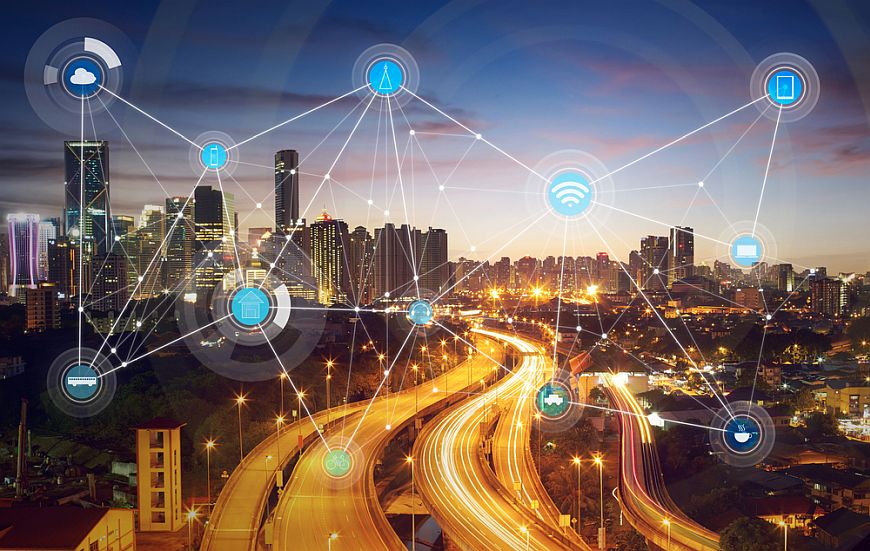The transportation sector in India is poised to undergo a major transformation and is moving towards intelligent transportation. We are already seeing this in India’s airports, but other modes of transport will also see the adoption of digital technologies. A single smart card for multiple modes of transport is long due, and railway reservation can be mobile enabled. The air transport authority in India is about to permit Wi-Fi in the skies, though it is already available in many railway stations in India, and even on some trains. There are indeed some exciting times ahead for travellers in India.
In an e-mail interview with DIGITAL CREED, Raman Sapra, Executive VP and GM.- Digital, Sasken Technologies tells us what it takes in the backend, to digitally enable transportation services. He tells us how Sasken works with transportation companies in India, to develop next-generation systems that include fare collection, operations, planning, dispatching and real-time passenger information. He also talks about the adoption of blockchain technology in the transportation sector and how Sasken plans to enable this.
Sasken Technologies Ltd. (formerly Sasken Communication Technologies Ltd.), is a leading product engineering and digital transformation solutions provider.
DC: Transit agencies worldwide are facing an increasing demand for multi-modal transport. How is Sasken enabling its customers towards the path of ‘Intelligent Transportation’ with digital transformation services?

Raman Sapra, Executive VP and GM.- Digital, Sasken Technologies
Raman Sapra: We are helping our customers in development, productisation, field deployment and ongoing support of intelligent transportation platforms. We leverage our capabilities in digital viz. mobility, cloud, APIs, digital platforms, AI/ML, and blockchain to develop next generation systems that include fare collection, operations, planning, dispatching and real-time passenger information. Some of the work packages that we executed are cloud enablement of fare collection and intermodal transport control systems, ticket validation applications for ruggedized devices for ticket validation, mobile transit ticket applications for improving commuter’s travel experience, API integration with ridesharing platforms, advanced analytical solutions for improving operations or roster scheduling, field deployment of the fare collection systems and test automation of the validation suite for an intelligent transportation platform.
DC: Integrated payment systems such as London’s Oyster smartcard & Singapore’s EZ-Link have set an example for effectively catering to digital commuters. Given the one-nation, one-card policy for public transportation plans gaining momentum in India, what is Sasken doing to cater to digital commuters by leveraging its capabilities in Mobility, Cloud, APIs & Analytics for the transportation sector?
Raman Sapra: We enable our customers, i.e. intelligent transportation platform providers, with development and deployment of end-to-end solutions for digital commuters. As you rightly alluded to, smart card is an important aspect of appealing to a digital commuter. We see adoption of cEMV, Mobile cEMV for payment of public transportation services and are developing solutions for enabling such usage.
We believe that blockchain can be leveraged to help an inter-modal transportation network to expedite transactions, to reduce disputes. An intermodal transportation network has multiple transit agencies and smart urban mobility services providers collaborating with each other.
DC: Apart from decentralised approach and enhanced security, what are some of the tangible benefits of adopting blockchain in Transportation Systems and how is Sasken catching up to these emerging technologies?
Raman Sapra: Blockchain is suitable for solving business problems that involve multiple parties and there is a significant trust deficit among the involved parties. This could be one of the reasons for blockchain to gain uptake in the financial sector, to start with. Coming back to the transportation segment, we believe that blockchain can be leveraged to help an inter-modal transportation network to expedite transactions, to reduce disputes. An intermodal transportation network has multiple transit agencies and smart urban mobility services providers collaborating with each other. Commuters want to purchase one transit ticket from one of the parties and commute all the legs of the journey. Currently, it takes multiple weeks for revenue reconciliation in such a network. By leveraging Ethereum, we developed a solution for making revenue reconciliation near real time.
DC: Can you tell me more about a few use cases wherein Sasken has leveraged cloud and open API enablement for intelligent transportation platforms?
Raman Sapra: Cloud, mobile and API enablement are key facets of developing and deploying next generation intelligent transportation platforms. We observe these three aspects repeating in multiple engagements. As a case in point, we migrated an on-premise intelligent transportation platform to public cloud for one of our key customers. The project was executed for a public transit agency that wanted to reduce capex cost in IT infrastructure. In another instance, we leveraged API gateways and API enabled the transportation platform for one of our customers. In this engagement, we contributed to different aspects of API enablement including API gateway selection, API design and development, performance benchmarking, monitoring etc.
Smart urban mobility is a key facet of the smart city initiative of the Government of India. This helps to reduce traffic congestion, reduce carbon footprint and improve the commuter’s day-to-day life. Definitely, this has a huge potential considering the number of travellers in Indian’s cities.
DC: What is your outlook on end-to-end enterprise mobility services to enhance the public transport domain?
Raman Sapra: Enterprise mobility is leveraged for improving the commuter’s travel experience and to improve the operations of transit agencies.
We observe that many public transit agencies are providing mobile transit ticketing applications. Commuters can easily purchase tickets from a mobile transit application for different legs of the journey, through different modes of transport rather than waiting in queues. In addition, the mobile transit ticketing applications are getting integrated with the ridesharing platforms. Hence, from a ridesharing application, the user can book tickets for the end to end journey including public transport.
DC: What are your thoughts on India’s road toward smart urban mobility? Do you consider this as an opportunity that will give us the next big leap into the future?
Raman Sapra: Smart urban mobility is a key facet of the smart city initiative of the Government of India. This helps to reduce traffic congestion, reduce carbon footprint and improve the commuter’s day-to-day life. Definitely, this has a huge potential considering the number of travellers in Indian’s cities. We work with public transit agencies and intelligent transportation platform providers to public transit agencies. Currently, we are analysing how the opportunities will shape up for us.









